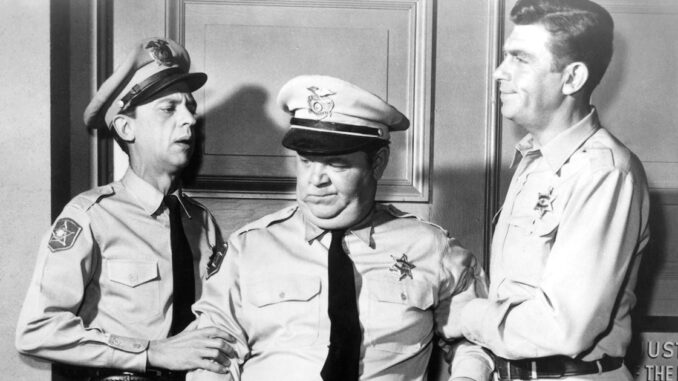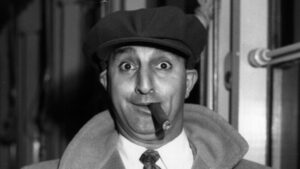
The Untold Truth of The Andy Griffith Show
When you think about The Andy Griffith Show, you probably picture sleepy Mayberry, wholesome humor, and the warm chuckle of Andy Taylor. But behind those classic black-and-white scenes was a set full of surprising twists, real-life tensions, and hidden truths that most fans never knew.
This isn’t just a trip down memory lane. It’s a deep dive into what really went on behind one of America’s most beloved shows. Let’s uncover the untold truth of The Andy Griffith Show—from backstage drama to character shake-ups, and even a few secrets that may just change the way you see Mayberry forever.
How The Show Began as a Backdoor Pilot
Before The Andy Griffith Show became a TV classic, it started as a one-off appearance on The Danny Thomas Show. In the 1960 episode titled “Danny Meets Andy Griffith,” Andy Taylor made his debut as a small-town sheriff. That single appearance served as a backdoor pilot—and the response was so strong that CBS greenlit the show almost immediately.
Mayberry Was Based on a Real Place (Kind Of)
Ever wondered if Mayberry was real? Turns out, it was loosely inspired by Andy Griffith’s real hometown: Mount Airy, North Carolina. Although Griffith himself often denied the connection publicly, fans visiting Mount Airy today will find a town that’s fully embraced its Mayberry roots—complete with a museum, themed diner, and even a squad car tour.
Don Knotts Wasn’t Meant To Be A Regular
That’s right—Barney Fife was never supposed to stick around. Don Knotts was initially only set to appear in a single episode. But his chemistry with Andy Griffith was undeniable, and fans loved him. His performance was so iconic that he earned five Emmy Awards during his run.
Andy Griffith Wasn’t as Mild-Mannered Offscreen
On screen, Sheriff Taylor was the cool-headed, easygoing leader of Mayberry. But behind the scenes, Andy Griffith could be intense and demanding. While not cruel, he reportedly had a perfectionist streak and didn’t shy away from voicing his opinions—especially about the direction of the show or how scenes were shot.
Frances Bavier (Aunt Bee) Struggled Offscreen
Frances Bavier played the warm-hearted Aunt Bee, but she and Andy Griffith didn’t get along well in real life. By most accounts, Bavier was a classically trained actress who took her craft very seriously—too seriously for Griffith’s more relaxed, joking demeanor. The tension between them reportedly lasted throughout the series.
The Mysterious Disappearance of Characters
Ever notice how certain characters just vanish from Mayberry? Take Ellie Walker, Andy’s original love interest. Played by Elinor Donahue, she disappeared after the first season with little explanation. Same goes for Barney, Gomer, and later Floyd. Some exits were due to contract disputes, others were tied to personal decisions—but they always left fans wondering.
Ron Howard Was Just a Kid But Extremely Professional
Ron Howard, who played Opie Taylor, was only six years old when he started. Despite his age, he took direction like a pro. Andy Griffith once shared that Howard was unusually serious about his work and was rarely distracted on set. That early discipline would serve him well as he became a celebrated Hollywood director.

Why The Show Never Aired a Final Episode
Most shows build up to a grand finale, but The Andy Griffith Show ended with barely a whisper. The final episode aired on April 1, 1968, without any indication it was the end. Why? Because the show morphed into Mayberry R.F.D., which continued the story with a different focus. Andy, Aunt Bee, and other characters slowly phased out.
The Real Reason Don Knotts Left the Show
Many fans were heartbroken when Don Knotts left after Season 5. While rumors swirled for years, the truth was simple: Knotts had assumed the show would end after five seasons (as Griffith originally said). So, he signed a movie deal with Universal. When the show got extended, it was too late—he was contractually bound to film movies.
The Show’s Transition from Black-and-White to Color Was Rocky
The shift to color in Season 6 came with more than a visual change—it also marked a tonal shift. Viewers noticed the show started losing its original charm. Critics and fans often agree that the black-and-white episodes (Seasons 1–5) were superior in both writing and tone.
Real-Life Tragedies Haunted the Cast
Some of the show’s brightest stars faced tough times. Howard McNear (Floyd the Barber) suffered a debilitating stroke during the show’s run. The producers wrote around it—he was often seen sitting, with limited movement. And after the show ended, actor Jack Burns (Warren Ferguson) found it hard to escape the shadow of his unpopular character.
The Show Was a Ratings Powerhouse—Until the End
Despite cast changes and tonal shifts, The Andy Griffith Show remained in the Nielsen Top 10 for its entire run. In fact, its final season was No. 1 in the ratings—one of only three shows to ever end at the top, joining I Love Lucy and Seinfeld.
Andy and Don Were Friends Until the End
Despite some backstage tension early on, Andy Griffith and Don Knotts remained lifelong friends. They reunited on Matlock years later, and Griffith even gave a moving tribute at Knotts’ funeral. Their bond, both on and offscreen, remains one of the show’s most heartfelt legacies.
Andy Griffith Had Final Say On Every Episode
While the show had a team of writers, Andy Griffith had ultimate creative control. He reviewed every script and made sure it aligned with his vision. His leadership kept the tone consistent (at least in the early years), and many credit him for the show’s enduring charm.
Mayberry Lives On in Reruns and Pop Culture
From MeTV marathons to YouTube clips, Mayberry continues to thrive decades after the last episode aired. The show’s themes of community, decency, and simple living strike a nostalgic chord in today’s fast-paced world. And let’s face it—who doesn’t want to escape to Mayberry once in a while?
The Legacy of The Andy Griffith Show
Whether you grew up with it or discovered it through reruns, The Andy Griffith Show remains a cornerstone of American television. But now that you know the behind-the-scenes truth, you can appreciate it on an even deeper level—not just as entertainment, but as a fascinating piece of TV history that was anything but simple behind the scenes.
Conclusion
The Andy Griffith Show may have looked like a simple slice of Americana, but what happened behind the scenes was anything but ordinary. From tense relationships to unexpected exits and a constantly evolving creative direction, the show had layers that most viewers never saw. And yet, it all worked. The charm, humor, and heart of Mayberry continue to live on—reminding us that even the most wholesome stories often come with a few secrets.
FAQs
1. Why did Don Knotts really leave The Andy Griffith Show?
Don Knotts thought the show would end after five seasons and signed a movie deal. When it got renewed, he couldn’t back out of his film commitments.
2. Was Mayberry a real town?
Not exactly. It was inspired by Andy Griffith’s hometown of Mount Airy, North Carolina, but Mayberry itself was fictional.
3. Did Andy Griffith and Aunt Bee get along in real life?
Not really. Frances Bavier and Andy Griffith reportedly had a strained relationship, due to their very different personalities and acting styles.
4. Why did the show switch to color, and did it affect ratings?
CBS switched to color to keep up with industry trends. Though ratings remained strong, many fans believe the black-and-white seasons had more heart.
5. Are there any modern spinoffs or remakes of The Andy Griffith Show?
There are no direct remakes, but the show’s influence lives on in pop culture and reruns, and Mayberry R.F.D. served as its continuation after 1968.
